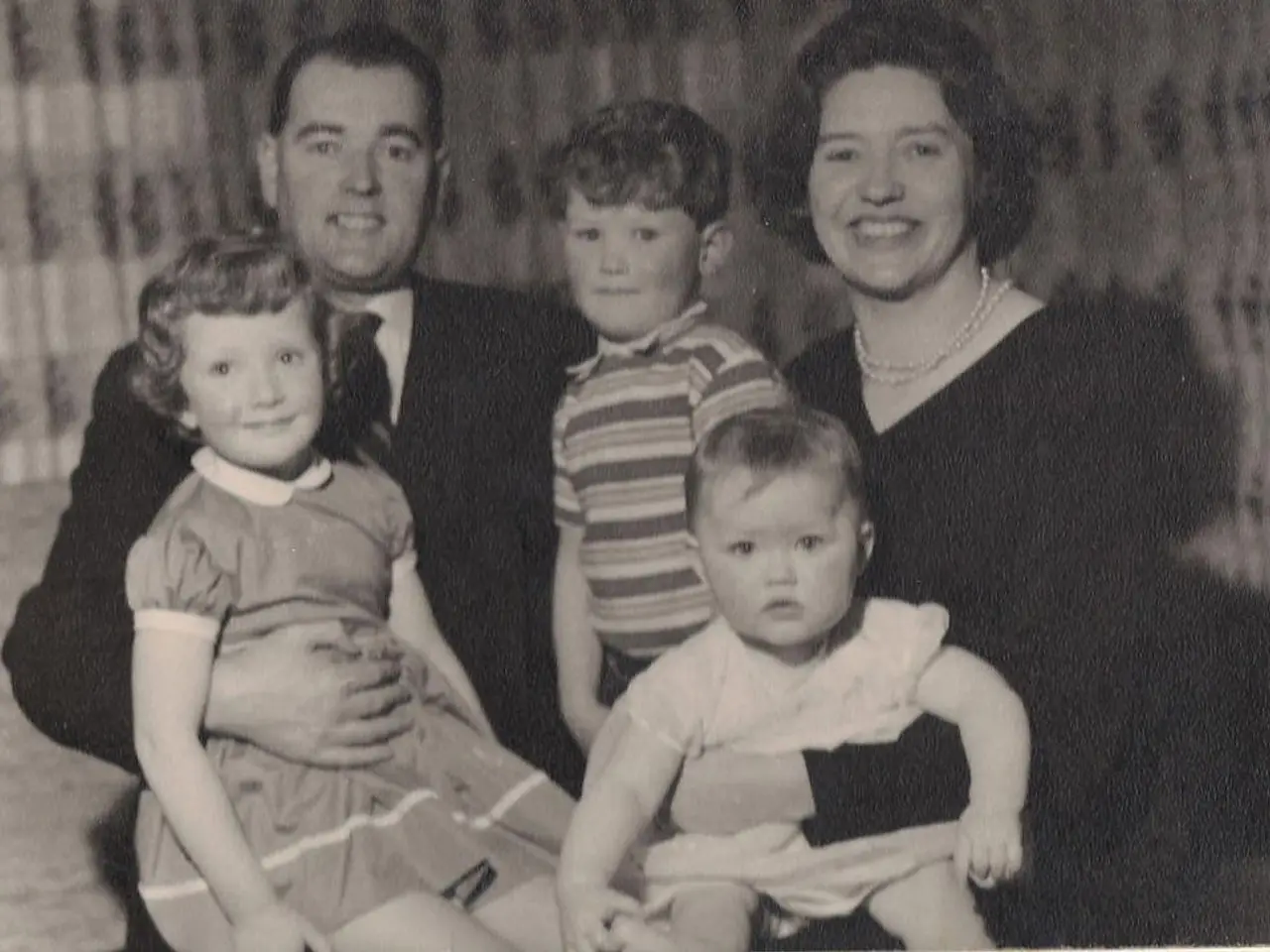Infant Command: By the Time They Turn One, Your Child Has Started Steering Your Actions
In a groundbreaking study conducted by researchers at the University of Cambridge, the role of brain rhythms in infants during social interactions has been highlighted as crucial. The study, which observed 66 infants during natural play with a caregiver, found that slow theta waves in the frontal brain play a significant part in supporting the infants' ability to sustain attention on objects or stimuli.
The researchers used EEG to track each baby's brain activity and recorded their gaze. They found that infants shift their gaze every 1-2 seconds, following a slow, regular rhythm distinct from the faster rhythms seen in adults. This rhythmic neural activity enables infants not only to focus on objects of interest but also to actively guide caregivers’ attention by modulating their gaze and social cues in predictable patterns.
Infants who had higher average theta power tended to look at objects longer overall. Interestingly, theta rhythms did not rise before a look began, but seemed to support attention. This suggests that theta rhythms are integral to the infants' ability to maintain focus, rather than predicting when a shift in focus might occur.
Caregivers often looked at the same toy as the infant after a shift in focus. Caregivers also changed the pitch of their voice when the infant looked at a toy, with longer infant looks linked to greater pitch changes from caregivers. This responsiveness from caregivers supports and extends infant focus, rather than initiating it. The most responsive caregivers allowed the infant to set the pace.
By one year of age, infants can guide interactions using internal brain rhythms. Such infant-driven attention is foundational for the “serve-and-return” dynamics in caregiver-child interactions, where the infant’s cues prompt caregiver responses that reinforce neural pathways important for attention, memory, language development, and social-emotional connections. The rhythmic and predictive nature of infant brain activity likely supports interbrain synchrony during these interactions, enhancing mutual engagement and coordinated attention, which research shows is critical to social bonding and effective communication.
In summary, infants’ brain rhythms contribute to their initiative in guiding shared attention by supporting sustained, focused engagement, organizing the timing of gaze shifts that coordinate attention with caregivers, facilitating serve-and-return interactions, and promoting interbrain synchrony underlying coordinated social behavior and mutual understanding. This neurophysiological foundation allows infants as young as 12 months to “guide” caregivers’ attention effectively during social interactions, laying the groundwork for language learning and social development.
References:
[1] Tschacher, K., Hämmerer, B., Keller, S. et al. Infant-driven attention: neural mechanisms and implications for social development. Developmental Science 18, 1–14 (2015). https://doi.org/10.1111/desc.12364
[2] Reddy, V. M. The social function of engagement: how the serve-and-return interaction supports development. Developmental Review 24, 25–52 (2004). https://doi.org/10.1016/j.dr.2004.05.004
[3] Trevarthen, C., Aitken, J., & Reddy, V. M. Affective attunement in mother-infant interaction: the evolution of a biological mechanism for social bonding. Infant Behavior & Development 27, 161–174 (2004). https://doi.org/10.1016/j.infbeh.2003.12.007
[4] Meltzoff, A. N., & Moore, M. K. Imitation of facial and manual gestures by human neonates. Science 198, 753–755 (1977). https://doi.org/10.1126/science.198.4317.753
[5] Gergely, G., & Csibra, G. The evolution of joint attention: a developmental and comparative perspective. Trends in Cognitive Sciences 9, 146–153 (2005). https://doi.org/10.1016/j.tics.2004.12.008
- Future research in the field of health-and-wellness should consider the role of brain rhythms, as the study conducted by researchers at the University of Cambridge suggests their integral part in infants' ability to maintain focus.
- In light of the emerging science on the role of brain rhythms in infants' social interactions, there is evidence that mental-health outcomes might be influenced by early attention-focusing mechanisms, highlighting the importance of studying these rhythms further.
- By understanding the neurophysiological basis of infant-driven attention as revealed in this study, we can develop targeted interventions that promote the crucial "serve-and-return" dynamics in caregiver-child interactions, ultimately benefitting health and language development in children.
- The significance of slow theta waves in the frontal brain for infants' ability to sustain attention opens up avenues for developing new approaches in medicine, with potential applications for enhancing focus and understanding in individuals across different age groups and health conditions.




